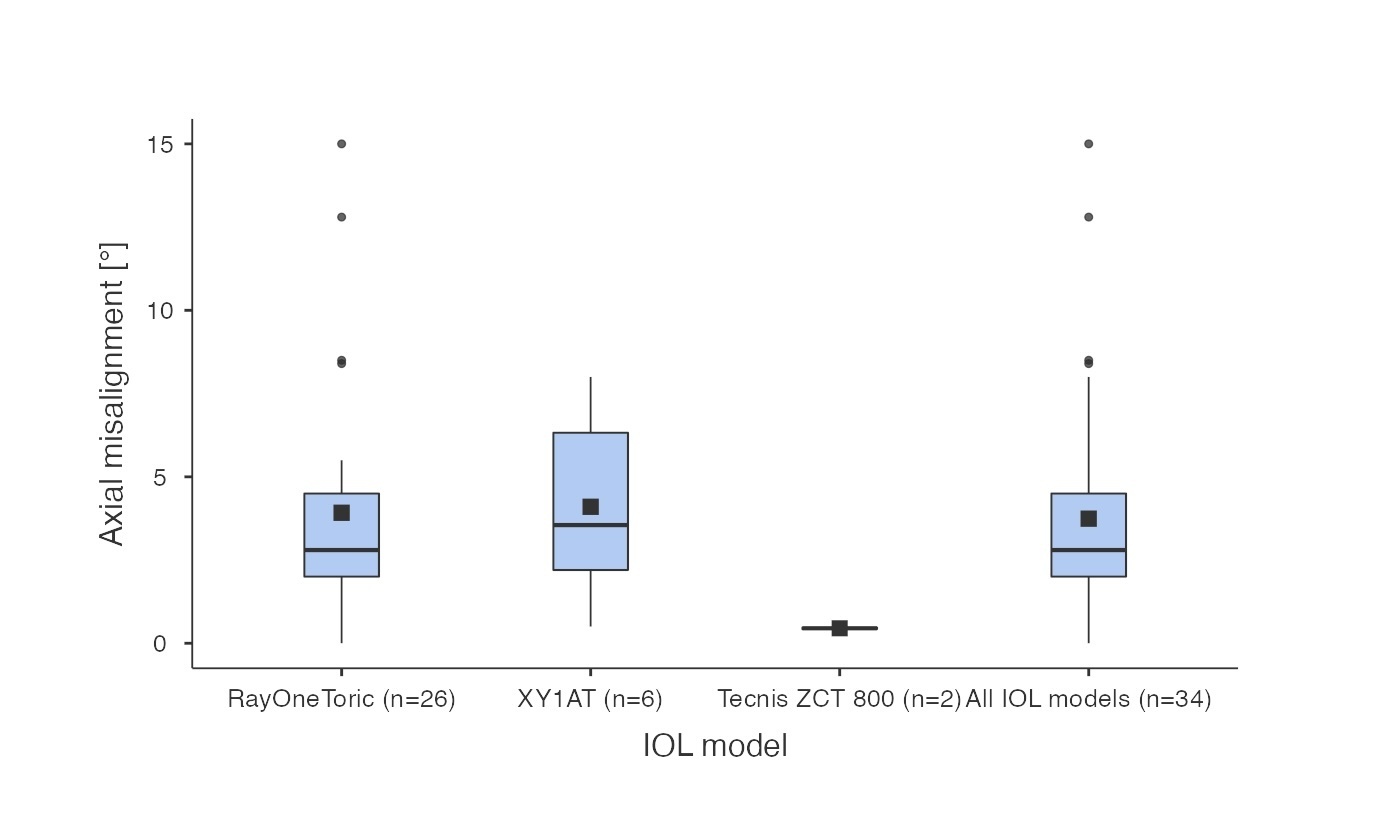Heidelberg, 14 October 2023: We are very pleased that our paper on the safety of reversible trifocality has been published online by the prestigious American Journal of Ophthalmology.
Isabella D. Baur, Gerd U. Auffarth, Maximilian K. Köppe, Grzegorz Łabuz, Ramin Khoramnia, Rotational Stability of Toric Capsular Bag–Fixated Intraocular Lenses in Duet Procedure for Reversible Trifocality, American Journal of Ophthalmology, Volume 256, 2023, Pages 156-163, ISSN 0002-9394, https://doi.org/10.1016/j.ajo.2023.08.006 (https://www.sciencedirect.com/science/article/pii/S0002939423003331)
Our Aim
We set out to evaluate the long-term rotational stability of capsular bag–fixated toric intraocular lenses (IOLs) in polypseudophakic eyes of patients who underwent duet procedure for reversible trifocality.
What we did
This was a retrospective interventional case series, where we included 34 eyes of 20 patients who underwent duet procedure where a monofocal toric IOL (RayOne toric, Hoya XY1AT, or a J&J Tecnis ZCT800) was implanted into the capsular bag and a trifocal-diffractive Rayner Sulcoflex IOL was implanted into the ciliary sulcus. All toric IOLs were implanted with image-guided navigation. We measured the manifest refraction and the uncorrected and distance corrected visual acuity at far, intermediate, and near distances. By evaluating Oculus Pentacam retroillumination images, we could determine the axis position of each toric IOL. We compared the results with the preoperatively planned axis position for each lens.

What we found
The median follow-up was 27 months. The spherical equivalent of manifest refraction was –0.04 ± 0.34 diopters (D) postoperatively, and the refractive cylinder was –0.14 ± 0.22 D on average. Binocular uncorrected and corrected distance visual acuity were 0.05 ± 0.11 logMAR and 0.02 ± 0.09 logMAR, respectively. The mean deviation from the calculated cylinder axis was 3.8° ± 3.5° with a median of 2.8° and a maximum deviation of 15.0°. Ninety-four percent of all eyes showed negligible deviation - less than 10°.
What do we conclude?
The long-term axial alignment of capsular bag–fixated toric IOLs in polypseudophakic eyes was comparable to the results reported for monopseudophakic toric IOL implantation. We can say, the presence of the second lens in the sulcus did not appear to affect the rotational stability of the first IOL in the capsular bag of the polypseudophakic eye.
Link to free download : https://authors.elsevier.com/a/1hv16gnZGvB3
The chart shows Axial misalignment by IOL model. The squares represent the mean values for the different models. The box plots with median, upper, and lower quartile as well as outliers are shown.
 Isabella Baur
Isabella Baur 
 DOG 2023 -Group Photo
DOG 2023 -Group Photo